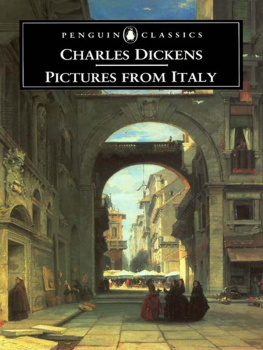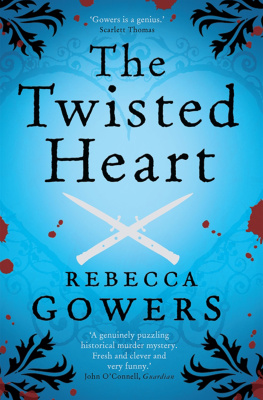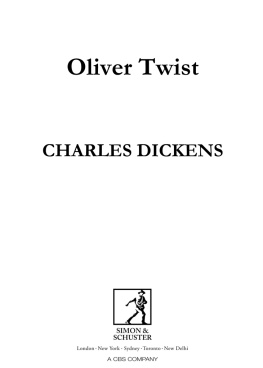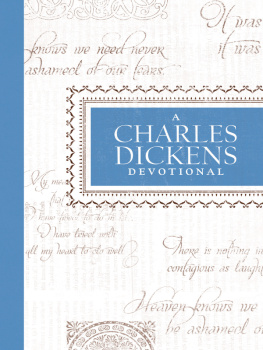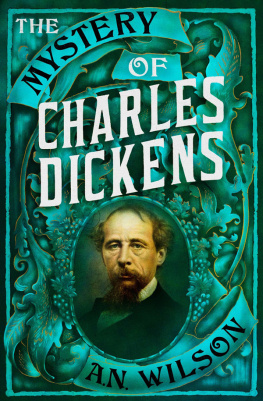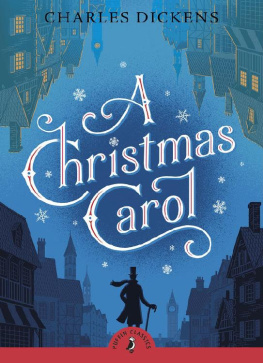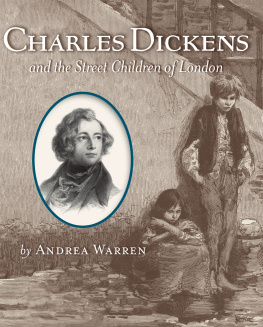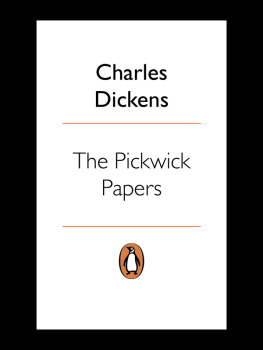Dickens Charles - Pictures from Italy
Here you can read online Dickens Charles - Pictures from Italy full text of the book (entire story) in english for free. Download pdf and epub, get meaning, cover and reviews about this ebook. City: Italy;London;England;New York;N.Y;USA, year: 1998;1846, publisher: Penguin Group USA, Inc., genre: Detective and thriller. Description of the work, (preface) as well as reviews are available. Best literature library LitArk.com created for fans of good reading and offers a wide selection of genres:
Romance novel
Science fiction
Adventure
Detective
Science
History
Home and family
Prose
Art
Politics
Computer
Non-fiction
Religion
Business
Children
Humor
Choose a favorite category and find really read worthwhile books. Enjoy immersion in the world of imagination, feel the emotions of the characters or learn something new for yourself, make an fascinating discovery.
- Book:Pictures from Italy
- Author:
- Publisher:Penguin Group USA, Inc.
- Genre:
- Year:1998;1846
- City:Italy;London;England;New York;N.Y;USA
- Rating:5 / 5
- Favourites:Add to favourites
- Your mark:
- 100
- 1
- 2
- 3
- 4
- 5
Pictures from Italy: summary, description and annotation
We offer to read an annotation, description, summary or preface (depends on what the author of the book "Pictures from Italy" wrote himself). If you haven't found the necessary information about the book — write in the comments, we will try to find it.
Pictures from Italy — read online for free the complete book (whole text) full work
Below is the text of the book, divided by pages. System saving the place of the last page read, allows you to conveniently read the book "Pictures from Italy" online for free, without having to search again every time where you left off. Put a bookmark, and you can go to the page where you finished reading at any time.
Font size:
Interval:
Bookmark:
PENGUIN BOOKS
Published by the Penguin Group:
Penguin Books Ltd, 80 Strand, London WC2R 0RL, England
Penguin Putnam Inc., 375 Hudson Street, New York, New York 10014, USA
Penguin Books Australia Ltd, Ringwood, Victoria, Australia
Penguin Books Canada Ltd, 10 Alcorn Avenue, Toronto, Ontario, Canada M4V 3B2
Penguin Books India (P) Ltd, 11 Community Centre, Panchsheel Park, New Delhi - 110 017, India
Penguin Books (NZ) Ltd, Cnr Rosedale and Airborne Roads, Albany, Auckland, New Zealand
Penguin Books (South Africa) (Pty) Ltd, 5 Watkins Street, Denver Ext 4, Johannesburg 2094, South Africa
Penguin Books Ltd, Registered Offices: 80 Strand, WC2R 0RL
First published 1846
Published as electronic edition 2002
Copyright Charles Dickens, 2002
All rights reserved
The moral right of the author(s) has been asserted
Making or distributing electronic copies of this book constitutes copyright infringement and could subject the infringer to civil and/or criminal liability, where applicable. No part of this book may be reproduced by any means without the prior written permission of the publisher.
All rights reserved.
ISBN: 978-1-1011-9975-6
CHARLES DICKENS
PICTURES FROM ITALY
Edited with an introduction and notes by
KATE FLINT
PENGUIN BOOKS
Charles Dickenss Italy was made up of violent contrasts. In Genoa, where he stayed first, he noted the rapid passage from a street of stately edifices, into a maze of the vilest squalor (p. ). Dickens presents Italy like a chaotic magic-lantern show, fascinated both by the spectacle it offers, and by himself as spectator, sometimes in pursuit of new sensations, sometimes confirming what he already knows for Italy, as he is well aware, is a country already well represented within English culture, however freshly aspects of it may strike the new visitor.
This is the record of travelling impelled by restlessness it is such a delight to me to leave new scenes behind, and still go on, encountering newer scenes, Dickens writes (p. ).
The whole of Dickenss stay in Venice is encompassed by the heading An Italian Dream. The reversal of normal topography the phantom streets which are canals and the buildings made by fairy hands (p. ). This was no dream: rather, it is an indication of the way in which Dickens, in the midst of the aesthetic pleasures which Italy has to offer, keeps returning not just to the continual presence of poverty, but to the persistent undercurrent of political cruelty. This undercurrent was still to be found in the contemporary Italy that Dickens was visiting, and its underpresence in this work is something to which we shall return.
Pictures from Italy is an account of Dickenss extended stay in Italy during 1844 and 1845. This was a deliberate break from novel writing: the final number of Martin Chuzzlewit came out on 30 June 1844, and his next novel, Dombey and Son, began publication three and a half months after Pictures from Italy appeared, on 30 September 1846.
By the time that Dickens published Pictures from Italy, travel books about Italy were far from a novelty. Still less were English tourists a rarity in the country: James Buzard, in his excellent The Beaten Track (1993), which studies the relationship between tourism, literature and culture in Europe between 1800 and 1918, writes of the pervasive impression of English ubiquity in Italy in the nineteenth century, an impression created partly through the tendency of English residents and visitors to cluster in the same places, and the increasing availability of English amenities in the most visited locations.). Nor, in some ways, is Dickens an atypical visitor. He does not fail to note down a catalogue of complaints against precisely those things which most irritated and distressed English visitors to the Continent: the brutality of foreigners towards animals; dirt; garlic-eating; the constant demand for tips; solid, lumpy furniture; women searching for lice in each others hair; a lack of reverence towards the dead; the peculiarly unhygienic practice of licking or kissing icons or statues toes or the stones of a church pavement; gesticulations; mangled pronunciation of English names; and the ubiquitous presence of mosquitoes, flies and fleas.
But however firmly Dickens establishes his national identity through such reactions to his immediate environment, what he determinedly refuses to do is to offer the kind of amalgamation of topographical notation and history that characterized so many examples of current English travel writing. Not for him the approach taken by Catherine Taylor, in her Letters from Italy to a Younger Sister (184041), where she claims that she has endeavoured to give such brief historical sketches as might lead to a further and deeper study of the events in which Italy has acted so great a part; in literature, to advert to the treasure which the Italian language contains and in art, to furnish such information as might assist in the formation of a pure and correct taste.). And, we shall see, despite his admiration for High Renaissance art, Dickens had plenty of scepticism about the unquestioned claim that those such as Roscoe made for the greatness of the Italian past: it contained far too much corruption and cruelty for that.
In Pictures from Italy, Charles Dickens is constructing not just a version of a country, but of himself. He announces his concern, at the outset, with those places to which the imaginations of most people are attracted in a greater or lesser degree (p. ), but in practice what emerge are recreations of those locations and moments which particularly struck him, strongly filtered through his own personality at times exuberant, at others caught in a kind of melancholy passive reverie. Again, Dickens was not the first traveller to Italy to foreground this way of writing. Frances Trollope opens A Visit to Italy (1842) by commenting on the numerous accounts that already existed, and then by justifying one more:
Even as to the outward and visible part of the business, descriptions made with all fidelity of spirit may, nevertheless, vary as widely as the tastes, temperament, and character of those who furnish them; and as great variety of interest, therefore, may arise from this as from any other source, deriving its value from individual opinion.
Dickens is especially fascinated with the act of seeing, and with the consideration of how his memory operates in relation to what he has seen. He presents his mind as an open screen which receives impressions: by entitling the chapter in which he journeys to Rome to Naples A Rapid Diorama, he suggests how he then re-presents these impressions as a currently popular form of visual entertainment and education. In his magnificent book Charles Baudelaire, Walter Benjamin comments that it is no accident that a special literary genre... panorama literature came into vogue he is writing about France, but the same holds true for England at the same time as dioramas were in fashion. These books consist of individual sketches which, as it were, reproduce the plastic foreground of those panoramas with their individual form and the extensive background of the panoramas with their store of information. Moreover, Dickens is a prototype of the flneur, about which Benjamin wrote memorably in Baudelaire: an observer formed through the habit of walking through city streets and endlessly using the eyes to record and categorize the visual information on offer; standing back from actual contact with individuals; intrigued and intoxicated by the phenomenon of the crowd, whilst not letting this reaction blind him to social reality as we see above all in Dickenss descriptions of the Carnival scenes in Rome.
Font size:
Interval:
Bookmark:
Similar books «Pictures from Italy»
Look at similar books to Pictures from Italy. We have selected literature similar in name and meaning in the hope of providing readers with more options to find new, interesting, not yet read works.
Discussion, reviews of the book Pictures from Italy and just readers' own opinions. Leave your comments, write what you think about the work, its meaning or the main characters. Specify what exactly you liked and what you didn't like, and why you think so.

